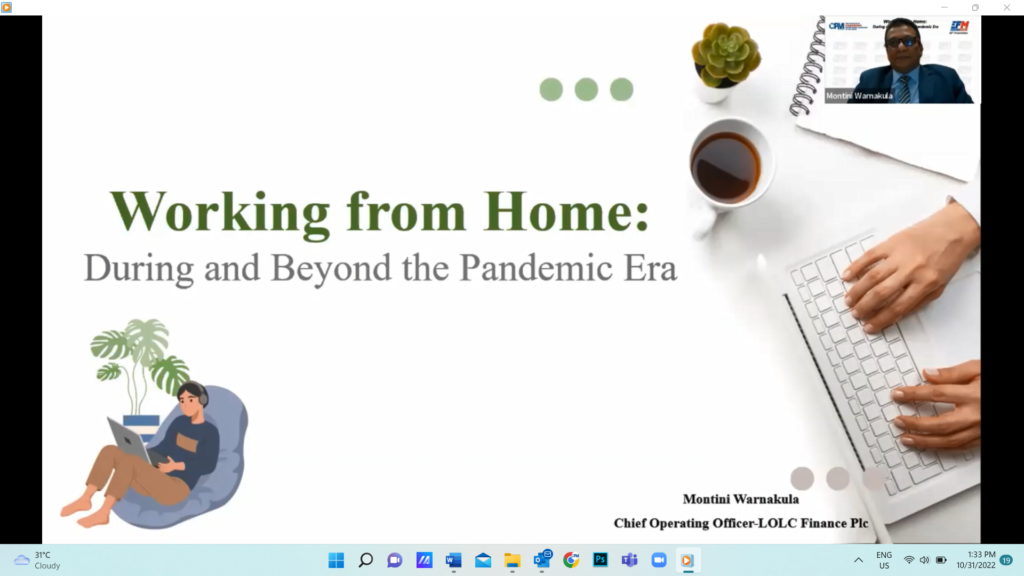Working from Home: During and Beyond the Pandemic Era
 October 28
October 28
 Online Via ZOOM
EFM - Evening for Managers
Online Via ZOOM
EFM - Evening for Managers

The term telework was coined by Nills in 1973 during the great oil crisis which compelled people to cutdown on transportation as a measure in managing the crisis. Telework which is also called as remote work, denotes working from anywhere beyond the physical office space. The term working from home (WFH) on the other hand refers to working particularly from home, which was a panacea introduced to continue with work during the Covid-19 pandemic. Unlike the earlier remote working initiatives which were predominantly an option, WFH during the Covid-19 was a forced initiative and the largest mass scale transition to work outside the office setting, that affected the whole world. Although the quarantine periods are no more, organisations tend to continue with WFH due to various reasons. Some organisations tend to sustain the forced mechanism, to which people have adapted while some others continue with WFH due to other crisis such as the energy crisis – particularly countries that are grappling with forex issues which has deteriorated their ability to purchase fuel and other sources of energies, while some are affected by the ongoing crisis between oil suppliers such as Ukraine and Russia. As these issues do not seem to resolve anytime soon, it is apparent that the WFH or Hybrid working methods will be continued for a prolonged period. As such as managers it is imperative to know how best to manage WFH and Hybrid working modes, in order to minimize the negative effects, while sustaining the positives of the two options.








